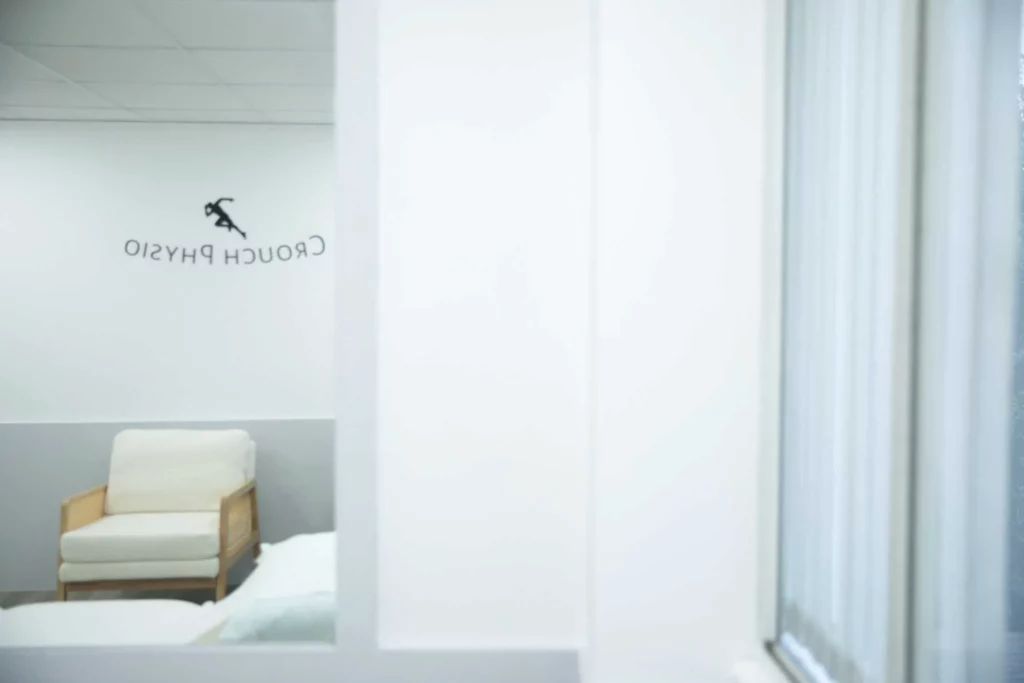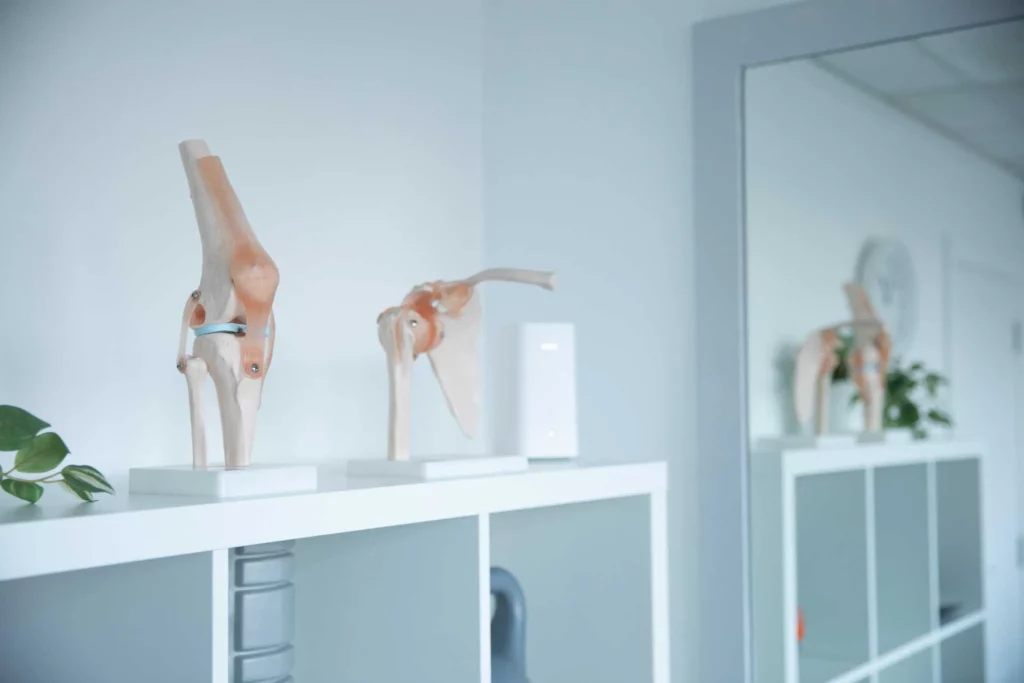We all know that working at a desk can be tough on your back and neck. After all, hours spent hunched over a keyboard or slouched in a chair don’t exactly promote good posture. But the dangers of desk jobs go beyond the odd ache or pain—they can lead to long-term problems if not addressed. As a physiotherapist, I see it all the time: office workers struggling with stiff necks, lower back pain, and general discomfort.
Fortunately, it doesn’t have to be this way. By understanding the risks and making a few simple changes, you can protect yourself from the hidden dangers of desk jobs. Let’s explore how!
The Posture Problem
One of the most common issues with desk jobs is poor posture. Sitting for long periods, particularly with rounded shoulders and a forward head position, places extra strain on your spine. Over time, this can lead to muscle imbalances, stiffness, and chronic discomfort. Sitting for extended periods also reduces circulation, meaning your muscles and tissues don’t get enough oxygen and nutrients, which slows down recovery from even minor aches.
Studies suggest that people who sit for more than six hours a day are significantly more likely to suffer from musculoskeletal issues, particularly in the neck, shoulders, and lower back (1).
Why Movement Matters
Our bodies weren’t designed to be sedentary—they were made to move! Prolonged sitting reduces physical activity, increasing your risk of weight gain, cardiovascular disease, and even depression. When we sit for long stretches, the muscles in our back, neck, and core essentially ‘switch off,’ making them weaker and more prone to injury (2).
Even worse, when we remain inactive, our joints don’t get the lubrication they need, leading to stiffness and a reduced range of motion, especially in the hips and lower back. The good news is that staying active at work isn’t as hard as you might think.
5 Ways to Prevent Back & Neck Pain at Your Desk
1. Set Up Your Desk Ergonomically
The first step to avoiding back and neck pain is to ensure your desk is set up correctly. A poorly arranged workspace can force you into awkward positions, placing unnecessary strain on your body (3).
• Chair height: Your feet should be flat on the floor, with your knees at a 90-degree angle. If your chair can’t be lowered, use a footrest.
• Monitor position: Your screen should be at eye level, roughly an arm’s length away, so you’re not craning your neck up or down.
• Keyboard and mouse: Keep these close enough so you can use them without reaching forward, which strains your shoulders.
2. Use a Sit-Stand Desk
A great option is to alternate between sitting and standing during the day. Sit-stand desks are becoming increasingly popular, and for good reason. Standing periodically improves posture and reduces pressure on your lower back (4).
When standing, keep your knees slightly bent, engage your core, and shift your weight between both feet to avoid overloading one side of your body.
3. Take Regular Breaks
It’s easy to get lost in work and stay seated for hours on end, but regular breaks are crucial. The ‘20-20-20 rule’ is a handy guide: every 20 minutes, take 20 seconds to look at something 20 feet away, giving your eyes and neck a rest.
For your body, try taking a quick 5-minute walk or doing some light stretches every hour. Even a short lap around the office or a few shoulder rolls can make a noticeable difference.
4. Stretch it Out
Incorporating simple stretches into your daily routine can do wonders for reducing tightness and promoting mobility. Focus on stretches that target your neck, shoulders, and lower back (5). Here are a few you can do at your desk:
• Neck rolls: Gently roll your head in a circular motion, stretching the sides of your neck.
• Seated spinal twist: While sitting, twist your torso to one side, grabbing the back of your chair for support, and hold for 10-15 seconds before switching sides.
• Shoulder shrugs: Raise your shoulders towards your ears, hold for a few seconds, then relax them down.
5. Strengthen Your Core and Glutes
A weak core and underactive glutes are common culprits behind poor posture and back pain. Strengthening these muscles can help stabilise your spine and improve overall posture, reducing the strain on your lower back. The glutes play a key role in supporting your pelvis, which in turn supports your lower back—so keeping them strong is essential.
Incorporate exercises like planks, bridges, and seated leg lifts into your routine. These can be done before or after work, or even during your lunch break if you have time. Squats and lunges are also great for activating the glutes and can be easily done in short breaks throughout the day (6).
The Bottom Line
Desk jobs are a reality of modern life, but that doesn’t mean we have to accept back and neck pain as inevitable. By making small adjustments to your posture, staying active, and listening to your body, you can avoid the aches and strains that come with sitting all day. So next time you’re glued to your desk, remember: a little movement goes a long way.
Your back will thank you!
Our Barnet, Cockfosters & Enfield Physio’s have tons of experience and are specialists in dealing with all ergonomic issues. Have confidence that our specialist Physiotherapists will closely assess, diagnose & treat you in the correct & evidence-based way for all injuries. You can book an appointment here.
Blog By: Emre Oz (Musculoskeletal Physiotherapist at Crouch Physio).
References
1. Crawford, Joanne O., et al. “Musculoskeletal health in the workplace.” Best practice & research clinical rheumatology 34.5 (2020): 101558.
2. Park, Jung Ha, et al. “Sedentary lifestyle: overview of updated evidence of potential health risks.” Korean journal of family medicine 41.6 (2020): 365.
3. Basakci Calik, Bilge, et al. “Effects of risk factors related to computer use on musculoskeletal pain in office workers.” International Journal of Occupational Safety and Ergonomics 28.1 (2022): 269- 274.
4. Ma, Jiameng, et al. “Effects of a workplace sit–stand desk intervention on health and productivity.” International journal of environmental research and public health 18.21 (2021): 11604.
5. King, Alison, et al. “A workplace stretching program for the prevention of musculoskeletal disorders in perioperative staff: A mixed methods implementation study.” Journal of Perioperative Nursing 33.4 (2020): 3-10.
6. Ahn, Seung-Eon, Mi-Young Lee, and Byoung-Hee Lee. “Effects of Gluteal Muscle Strengthening Exercise-Based Core Stabilization Training on Pain and Quality of Life in Patients with Chronic Low Back Pain.” Medicina 60.6 (2024): 849.




